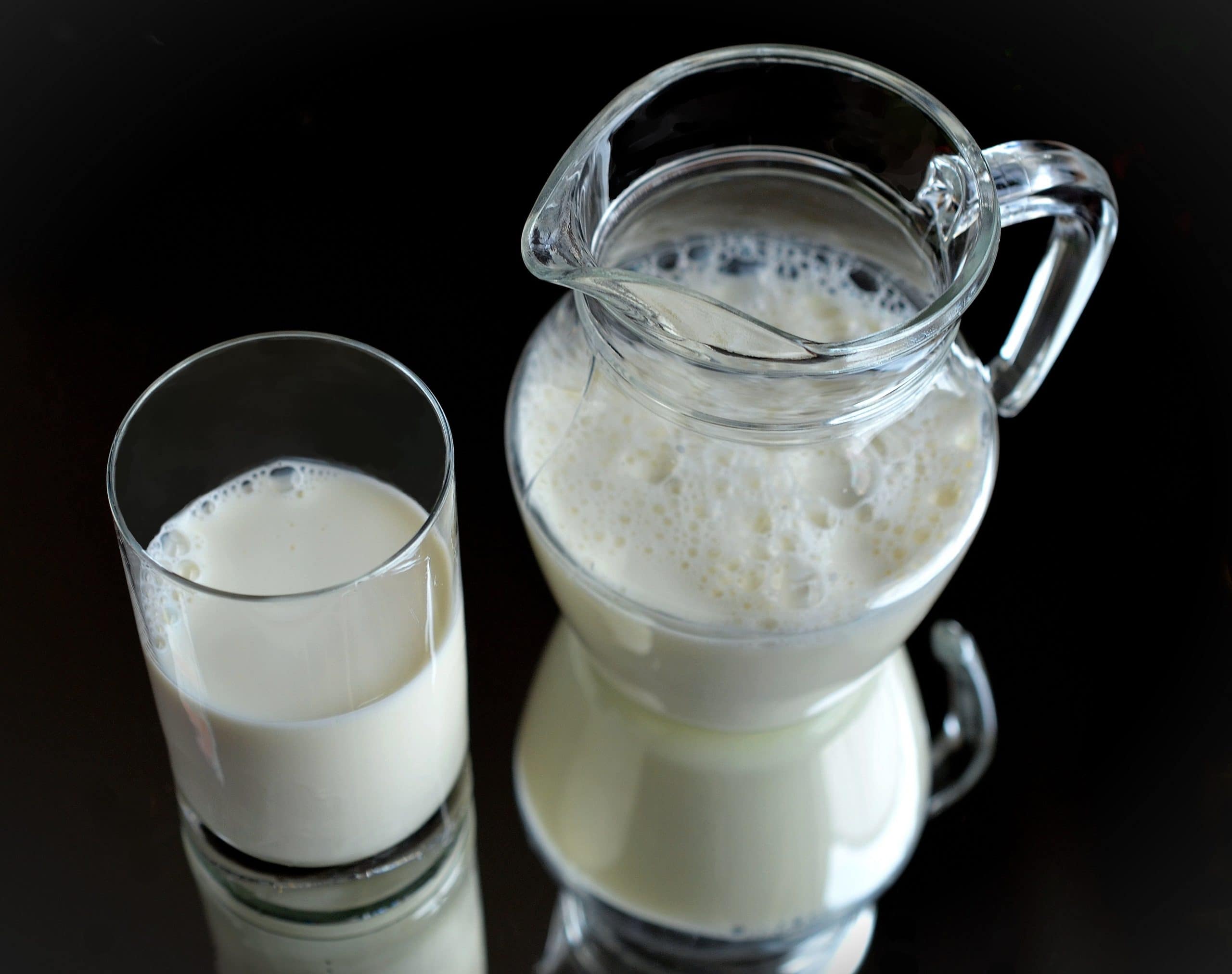Understanding Lactose Intolerance: Symptoms, Diagnosis, and Management Strategies
- Dietary Advice (non Low FODMAP)
Lactose intolerance is a commonly reported digestive disorder that leads to discomfort after consuming lactose-containing foods and beverages.
But how do you know if you have lactose intolerance? And if you are diagnosed, what can you do about it?
This blog post will guide you in recognizing symptoms of lactose intolerance, undergoing proper diagnosis, and implementing effective management strategies.

What is Lactose?
Lactose is a type of sugar that is naturally found in milk and milk products such as yoghurts, cheese, ice cream and chocolate.
It is broken down by an enzyme called lactase, which is produced in the lining of the small intestine.
Lactose is then absorbed into the body (1).
What is Lactose intolerance?
Lactose is a sugar found in milk and dairy products. It consists of two sugar molecules, glucose and galactose, linked together (1). This makes it a disaccharide – the ‘D’ in FODMAP.
To be absorbed by the body, lactose needs to be broken down into these individual sugars through the action of an enzyme called lactase.
Once lactose is broken down into glucose and galactose, these sugars can be easily absorbed and utilized for energy.
What is lactose intolerance?
It is characterized by the body’s inability to digest lactose fully due to a lactase enzyme deficiency in the small intestine (1).
Due to limited lactase, undigested lactose reaches the large intestine. The bacteria in the large intestine ferment the undigested lactose, producing gasses and various digestive symptoms.
The symptoms experienced by individuals with lactose intolerance can vary in severity and may include (1):
- Abdominal pain and cramps
- Bloating
- Flatulence
- Diarrhoea
- Nausea
It is important to note that symptoms may not appear immediately after consuming lactose but can manifest within a few hours.
The severity of symptoms can vary from person to person, with some individuals being more sensitive to lactose than others.

Is lactose intolerance the same as a milk allergy?
No, lactose intolerance is not the same as a milk allergy.
A milk allergy involves an immune system response that considers milk proteins as harmful substances, leading to an allergic reaction.
The symptoms of milk allergy can range from mild to severe and may include the following:
- Skin reactions (e.g., hives, itching, or eczema).
- Gastrointestinal symptoms (e.g., abdominal pain, diarrhoea, nausea, or vomiting).
- Respiratory problems
- Anaphylaxis (requires immediate medical attention).
Although there is some overlap in gastrointestinal symptoms, the underlying mechanisms for this differ from lactose intolerance.
Causes of Lactose Intolerance
It can have different causes. Primary lactose intolerance is the most common form caused by insufficient lactase production, which is genetic (2).
You produce less lactase as you age, so you may become more lactose intolerant later in life (3, 4). Certain ethnic groups are more prone to inheriting that gene pattern (5).
Secondary lactose intolerance can develop due to certain conditions that affect the small intestine, such as (6) :
- Celiac disease
- Crohn’s disease
- Gastrointestinal infections
- Radiation therapy.
This type of lactose intolerance generally improves by treating the underlying condition.
How to diagnose Lactose Intolerance
Many people experience discomfort after consuming dairy products, but it can be challenging to determine if lactose intolerance is the underlying cause.
Diagnosing lactose intolerance requires an assessment of symptoms.
However, there are currently no tests that your doctor can use to confirm a diagnosis of food intolerance, including lactose.
Hydrogen breath tests
Hydrogen breath tests are the most commonly used due to their non-invasive nature and accurate and reproducible results (1, 6, 7).
This test measures how much gas (hydrogen) your gut bacteria produces when you have lactose. A higher reading can confirm lactose intolerance.
Blood tests
Another method suggested for testing lactose intolerance involves fasting overnight and drinking a lactose-containing liquid (8).
Blood samples are taken at specific intervals to measure the glucose level in the blood. The blood glucose level will remain relatively low if the lactose is not digested correctly (9).
However, you won’t usually have this test, as it is more invasive, requiring multiple blood tests. It is also not very accurate (9, 10)!
Dietary elimination
Lactose intolerance can be confirmed by following a lactose-free diet for around 2-4 weeks and monitoring if your symptoms are relieved.
Confirmation of a lactose intolerance would be made by reintroducing lactose-containing foods into your diet and assessing if your symptoms return.
This would help to identify whether there is an intolerance, but also what your tolerance level is. The best way to assess this is via a food and symptom diary under the direction of a dietitian.
Management of lactose intolerance
Dietary modifications
You might be pleased to hear that most people with lactose intolerance can still tolerate some lactose (11). You can manage lactose intolerance by reducing intake to your tolerated level.
Reading food labels and checking lactose-containing ingredients can help identify hidden sources. While dairy products are apparent sources, lactose can also be present in:
- Baked goods
- Medications
- Condiments.
However, as most people with lactose intolerance can tolerate up to 12g lactose in a sitting (about a 250ml glass of milk; 12 13, 14), these should not give you any symptoms!
The tolerated amount has also been shown to increase when having lactose with other foods, as it essentially slows the exposure of lactose on the gut (15).
However, various alternative dairy options are available for individuals with lactose intolerance, widening the options.
hese include lactose-free milk and dairy products and non-dairy alternatives such as almond milk, soy milk, rice milk, and oat milk, which you can use as substitutes.
Choosing fortified versions of lactose-free and alternative milk can help you meet your calcium and vitamin B12 needs.
There are also dairy foods which, you may be surprised to find, have hardly any lactose in them, such as:
- Cheddar
- Feta
- Mozzarella
- Edam
- Brie
- Goats cheese
- Camembert
- Pecorino
- Swiss cheese
- Blue cheese
- Butter and margarine
- Sour cream or crème fraiche
- Dark chocolate.
Lactase supplementation
Lactase supplements are available over the counter and can be taken before consuming lactose-containing foods, providing the necessary lactase enzyme to aid lactose digestion.
In scientific studies, lactase supplementation by tablets was shown to improve lactose digestion and symptom management (16, 17).
However, it has only shown modest effects on symptoms – around an 18% overall reduction (17).
It’s worth noting that lactase replacement would only be effective if symptoms are related to lactose-containing products alone and not related to other FODMAPs in the diet (2).
You can read more about FODMAPs in our blog post: The Low FODMAP diet.
Can probiotics help with lactose intolerance?
Some studies suggest that certain strains of probiotics may help improve lactose digestion and reduce symptoms in individuals with lactose intolerance.
Two systematic reviews evaluating randomized controlled trials found an overall positive relationship between probiotics and lactose intolerance but with varying degrees of efficacy (11, 18).
The effectiveness of probiotics can vary depending on the individual, the specific probiotic strain used, the dosage, and other factors (11).
Further clinical trials are needed to gather more consistent evidence, as it is currently unclear whether probiotics can help treat lactose intolerance or which strains and doses should be used.
Summary
Lactose intolerance is a digestive disorder characterized by the body’s inability to digest lactose fully, resulting in abdominal pain, bloating, and diarrhea.
Diagnosing lactose intolerance involves hydrogen breath tests, blood tests after drinking lactose, or a dietary elimination approach.
Managing lactose intolerance involves reducing lactose intake and potentially taking lactase supplements to improve lactose digestion.
It is advisable to consult with healthcare professionals or registered dietitians to receive personalized advice and guidance in managing lactose intolerance effectively.